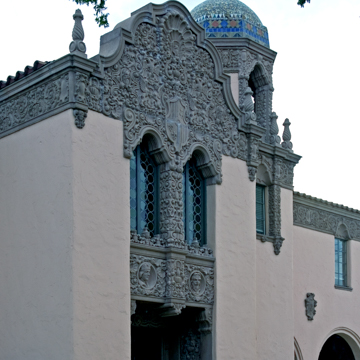This is one of Waters's best-known buildings. The white stucco structure with low-pitched, red tile roof is noted for its continuous ribbon of heavy, ornate cast-stone detailing at its frieze line, its domed tower, and its rounded entrance parapet reminiscent of Spanish Plateresque.
Decades later, Waters's Grace Episcopal Church (1951), at 701 S. Missouri Avenue, illustrates his transition to streamlined regionalism. It is evidenced in the church's crisply chiseled, low-gabled nave sheathed in rose-colored brick with slightly slanted buttresses at the sides.


